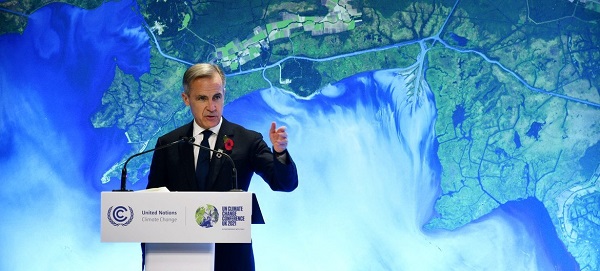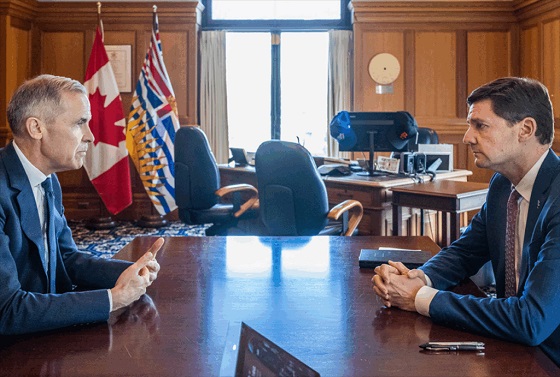Alberta
Province will begin to ease restrictions at long term care homes
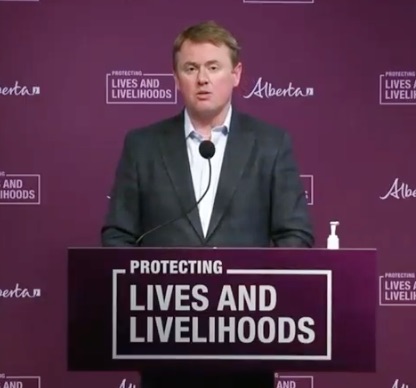
Relaxing restrictions on continuing care visits
High rates of vaccination among residents and staff at continuing care facilities means families will soon be able to more easily visit their loved ones.
Starting May 10, updated public health measures will come into effect for continuing care facilities in Alberta. These protocols will increase the number of designated family/support persons for each resident, expand the number of people who can attend outdoor social visits and allow limited indoor social gatherings.
Active cases in long-term care have declined from the peak of 831 on Dec. 27 to 44 as of April 24. Hospitalizations have decreased by 93 per cent and fatalities due to COVID-19 have declined by 94 per cent.
“Long-term care residents need joy, hope, and connection just like everyone else. They have shouldered the burden of this pandemic and sacrificed important time with their loved ones and I’m glad that we are able to ease these restrictions, but we will continue to move cautiously, as evidence is still emerging on vaccines and their ability to both protect residents from variants and limit transmitting the virus to others.”
“We know the ability to connect in-person with loved ones is important. Alberta was one of the few provinces that still allowed visitors in continuing care facilities even during the most difficult points throughout the pandemic, because we understand how important seeing loved ones is. We continue to work to strike a balance between protecting residents from infection and sustaining their overall health and well-being.”
“We have worked closely with family, residents and operators on the best way to move forward with changes. Based on the feedback of those most impacted, the available data and the power of vaccines, we are striking the right balance between protecting residents and staff from COVID-19 and enabling their quality of life.”
In April, town halls were held with continuing care operators, residents and staff to discuss the impact of vaccinations and concerns over COVID-19 variants. The majority of participants indicated that they were ready for eased restrictions but wanted some safety measures to remain.
Starting May 10, the following changes to visitation policy will take effect:
- Where possible, and provided the majority of residents agree, indoor social visits with up to four visitors will be able to resume again, as long as they are from the same household and distancing, masking and other health measures remain in place.
- Outdoor social visits in these facilities can expand to up to 10 people, including the resident. This is double the current limit of five and brings the limit in line with the current outdoor limit for the rest of the province.
- Residents may name up to four designated family/support persons for unrestricted access, and visitors will continue to be able to visit when residents are approaching the end of their lives or suffer a change in health status.
These changes are not mandatory and will vary by site based on the design of the building, wishes of residents and other factors.
Each site must develop their own visiting approach that falls within the guidelines set out in the order and reflects the risk tolerance of the residents who live at that site.
All other COVID-19 measures remain in place, including:
- Mandatory order restricting staff from working at more than one designated supportive living or long-term care facility to help prevent the spread of illness between facilities.
- Symptom and exposure checks for all who are entering a continuing care facility.
- Continuous masking and distancing during indoor visits.
As Alberta’s vaccination program expands and community transmission lowers, consideration will be given to easing additional restrictions.
Alberta’s government is responding to the COVID-19 pandemic by protecting lives and livelihoods with precise measures to bend the curve, sustain small businesses and protect Alberta’s health-care system.
Alberta
‘Weird and wonderful’ wells are boosting oil production in Alberta and Saskatchewan

From the Canadian Energy Centre
Multilateral designs lift more energy with a smaller environmental footprint
A “weird and wonderful” drilling innovation in Alberta is helping producers tap more oil and gas at lower cost and with less environmental impact.
With names like fishbone, fan, comb-over and stingray, “multilateral” wells turn a single wellbore from the surface into multiple horizontal legs underground.
“They do look spectacular, and they are making quite a bit of money for small companies, so there’s a lot of interest from investors,” said Calin Dragoie, vice-president of geoscience with Calgary-based Chinook Consulting Services.
Dragoie, who has extensively studied the use of multilateral wells, said the technology takes horizontal drilling — which itself revolutionized oil and gas production — to the next level.
“It’s something that was not invented in Canada, but was perfected here. And it’s something that I think in the next few years will be exported as a technology to other parts of the world,” he said.
Dragoie’s research found that in 2015 less than 10 per cent of metres drilled in Western Canada came from multilateral wells. By last year, that share had climbed to nearly 60 per cent.
Royalty incentives in Alberta have accelerated the trend, and Saskatchewan has introduced similar policy.
Multilaterals first emerged alongside horizontal drilling in the late 1990s and early 2000s, Dragoie said. But today’s multilaterals are longer, more complex and more productive.
The main play is in Alberta’s Marten Hills region, where producers are using multilaterals to produce shallow heavy oil.
Today’s average multilateral has about 7.5 horizontal legs from a single surface location, up from four or six just a few years ago, Dragoie said.
One record-setting well in Alberta drilled by Tamarack Valley Energy in 2023 features 11 legs stretching two miles each, for a total subsurface reach of 33 kilometres — the longest well in Canada.
By accessing large volumes of oil and gas from a single surface pad, multilaterals reduce land impact by a factor of five to ten compared to conventional wells, he said.
The designs save money by skipping casing strings and cement in each leg, and production is amplified as a result of increased reservoir contact.
Here are examples of multilateral well design. Images courtesy Chinook Consulting Services.
Parallel
Fishbone
Fan
Waffle
Stingray
Frankenwells
Alberta
Alberta to protect three pro-family laws by invoking notwithstanding clause

From LifeSiteNews
Premier Danielle Smith said her government will use a constitutional tool to defend a ban on transgender surgery for minors and stopping men from competing in women’s sports.
Alberta Premier Danielle Smith said her government will use a rare constitutional tool, the notwithstanding clause, to ensure three bills passed this year — a ban on transgender surgery for minors, stopping men from competing in women’s sports, and protecting kids from extreme aspects of the LGBT agenda — stand and remain law after legal attacks from extremist activists.
Smith’s United Conservative Party (UCP) government stated that it will utilize a new law, Bill 9, to ensure that laws passed last year remain in effect.
“Children deserve the opportunity to grow into adulthood before making life-altering decisions about their gender and fertility,” Smith said in a press release sent to LifeSiteNews and other media outlets yesterday.
“By invoking the notwithstanding clause, we’re ensuring that laws safeguarding children’s health, education and safety cannot be undone – and that parents are fully involved in the major decisions affecting their children’s lives. That is what Albertans expect, and that is what this government will unapologetically defend.”
Alberta Justice Minister and Attorney General Mickey Amery said that the laws passed last year are what Albertans voted for in the last election.
“These laws reflect an overwhelming majority of Albertans, and it is our responsibility to ensure that they will not be overturned or further delayed by activists in the courts,” he noted.
“The notwithstanding clause reinforces democratic accountability by keeping decisions in the hands of those elected by Albertans. By invoking it, we are providing certainty that these protections will remain in place and that families can move forward with clarity and confidence.”
The Smith government said the notwithstanding clause will apply to the following pieces of legislation:
-
Bill 26, the Health Statutes Amendment Act, 2024, prohibits both gender reassignment surgery for children under 18 and the provision of puberty blockers and hormone treatments for the purpose of gender reassignment to children under 16.
-
Bill 27, the Education Amendment Act, 2024, requires schools to obtain parental consent when a student under 16 years of age wishes to change his or her name or pronouns for reasons related to the student’s gender identity, and requires parental opt-in consent to teaching on gender identity, sexual orientation or human sexuality.
-
Bill 29, the Fairness and Safety in Sport Act, requires the governing bodies of amateur competitive sports in Alberta to implement policies that limit participation in women’s and girls’ sports to those who were born female.”
Bill 26 was passed in December of 2024, and it amends the Health Act to “prohibit regulated health professionals from performing sex reassignment surgeries on minors.”
As reported by LifeSiteNews, pro-LGBT activist groups, with the support of Alberta’s opposition New Democratic Party (NDP), have tried to stop the bill via lawsuits. It prompted the Smith government to appeal a court injunction earlier this year blocking the province’s ban on transgender surgeries and drugs for gender-confused minors.
Last year, Smith’s government also passed Bill 27, a law banning schools from hiding a child’s pronoun changes at school that will help protect kids from the extreme aspects of the LGBT agenda.
Bill 27 will also empower the education minister to, in effect, stop the spread of extreme forms of pro-LGBT ideology or anything else to be allowed to be taught in schools via third parties.
Bill 29, which became law last December, bans gender-confused men from competing in women’s sports, the first legislation of its kind in Canada. The law applies to all school boards, universities, and provincial sports organizations.
Alberta’s notwithstanding clause is like all other provinces’ clauses and was a condition Alberta agreed to before it signed onto the nation’s 1982 constitution.
It is meant as a check to balance power between the court system and the government elected by the people. Once it is used, as passed in the legislature, a court cannot rule that the “legislation which the notwithstanding clause applies to be struck down based on the Charter of Rights and Freedoms, the Alberta Bill of Rights, or the Alberta Human Rights Act,” the Alberta government noted.
While Smith has done well on some points, she has still been relatively soft on social issues of importance to conservatives , such as abortion, and has publicly expressed pro-LGBT views, telling Jordan Peterson earlier this year that conservatives must embrace homosexual “couples” as “nuclear families.”
-

 Daily Caller2 days ago
Daily Caller2 days agoDemocrats Explicitly Tell Spy Agencies, Military To Disobey Trump
-

 Alberta2 days ago
Alberta2 days agoAlberta on right path to better health care
-

 Crime1 day ago
Crime1 day ago‘Modern-Day Escobar’: U.S. Says Former Canadian Olympian Ran Cocaine Pipeline with Cartel Protection and a Corrupt Toronto Lawyer
-

 Great Reset2 days ago
Great Reset2 days agoAre climate-obsessed elites losing their grip over global politics?
-

 Business20 hours ago
Business20 hours agoCanada is failing dismally at our climate goals. We’re also ruining our economy.
-

 Daily Caller2 days ago
Daily Caller2 days agoALAN DERSHOWITZ: Can Trump Legally Send Troops Into Our Cities? The Answer Is ‘Wishy-Washy’
-
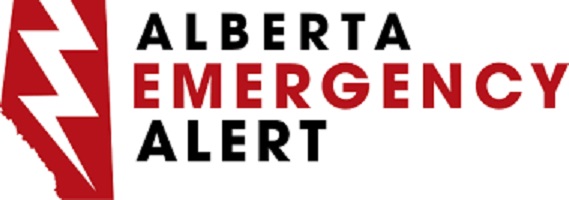
 Alberta1 day ago
Alberta1 day agoAlberta Emergency Alert test – Wednesday at 1:55 PM
-
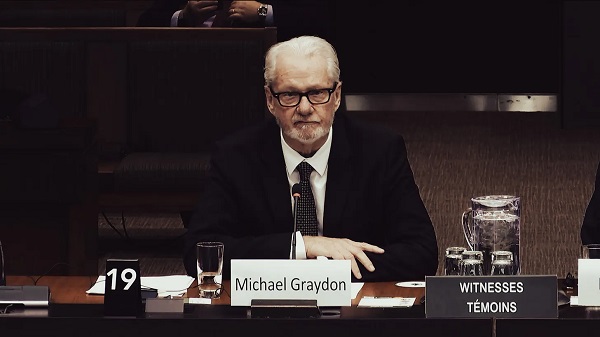
 Business2 days ago
Business2 days agoNearly One-Quarter of Consumer-Goods Firms Preparing to Exit Canada, Industry CEO Warns Parliament















